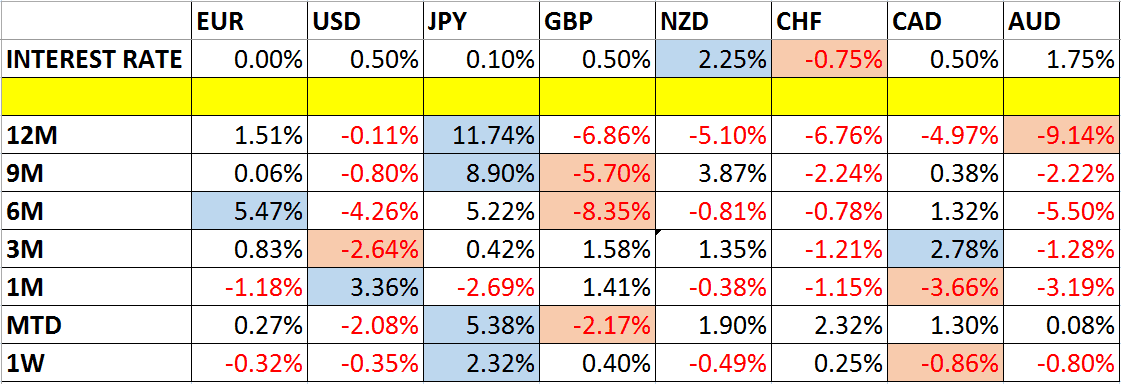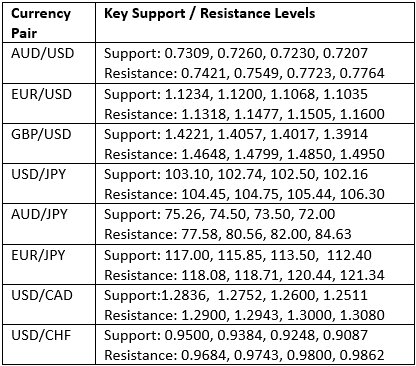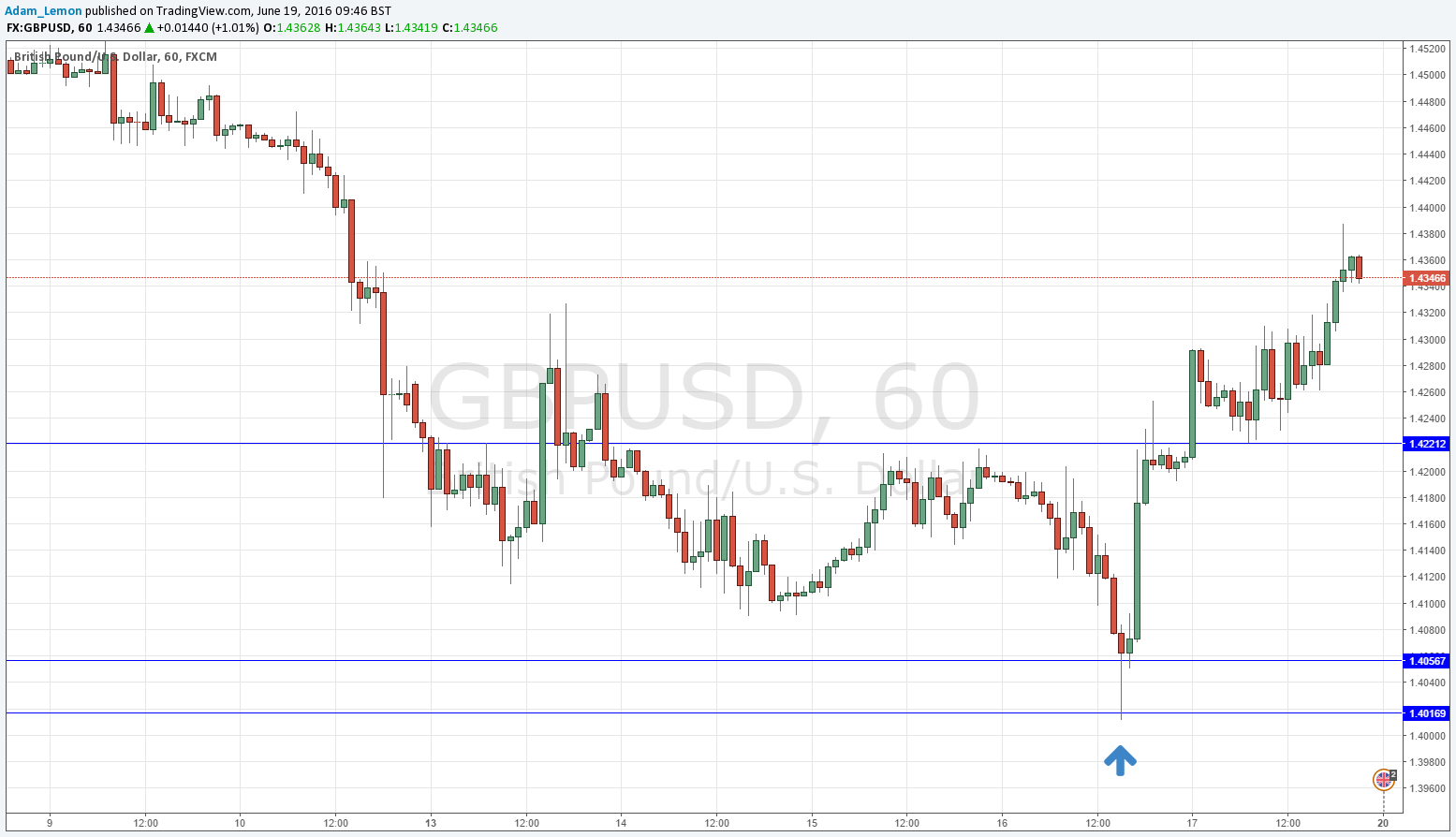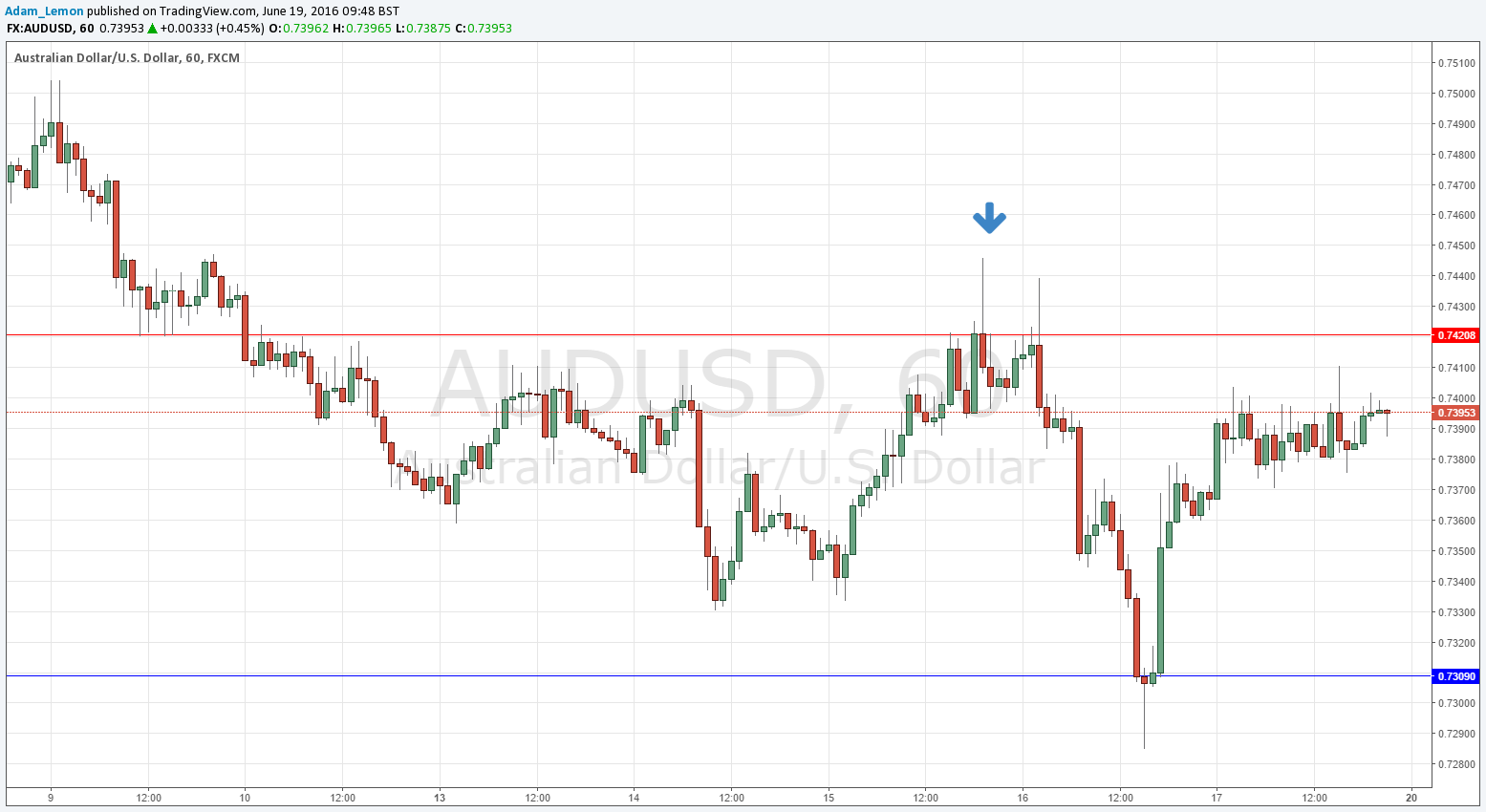This week we’ll begin with our monthly and weekly forecasts of the currency pairs worth watching. The first part of our forecast is based upon our research of the past 11 years of Forex prices, which show that the following methodologies have all produced profitable results:
Trading the two currencies that are trending the most strongly over the past 3 months.
Assuming that trends are usually ready to reverse after 12 months.
Trading against very strong counter-trend movements by currency pairs made during the previous week.
Buying currencies with high interest rates and selling currencies with low interest rates.
Let’s take a look at the relevant data of currency price changes and interest rates to date, which we compiled using a trade-weighted index of the major global currencies:
Monthly Forecast June 2016
This month, we forecasted that the best movements will be short USD/JPY, and long EUR/USD. The performance so far is very positive:
Weekly Forecast 19th June 2016
Last week, we made no forecast.
This week, we again make no forecast, as there were no strong counter-trend movements.
This week has been dominated by weakness in the commodity currencies, and strength in the Japanese Yen and Swiss Franc. There is a “safety” sentiment in the market.
Volatility was much less than it was last week, with only about 44% of the major and minor currency pairs changing in value by more than 1%. Volatility is likely to be greater over this coming week which will be dominated by the British vote on European Union membership.
You can trade our forecasts in a real or demo Forex brokerage account.
Key Support/Resistance Levels for Popular Pairs
At the FX Academy, we teach that trades should be entered and exited at or very close to key support and resistance levels. There are certain key support and resistance levels that should be watched on the more popular currency pairs this week, which might result in either reversals or breakouts:
Let’s see how trading two of these key pairs last week off key support and resistance levels could have worked out:
GBP/USD
We had expected the levels at both 1.4057 and 1.4017 might act as support, as they had each acted previously as both support and resistance. Note how these “flipping” levels can work really well. The H1 chart below shows the price made a pin candle rejecting both of these levels simultaneously, before rising very strongly. Note how the trade was quickly in profit, which is always a good sign that it is more likely to turn out well. The trade really took off, and has made a maximum reward to risk ratio of approximately 4 to 1 if the stop had been placed just below the swing low.
AUD/USD
We had expected the level at 0.7421 might act as resistance, as it had acted previously as both support and resistance. Note how these “flipping” levels can work really well. The H1 chart below shows how the price rose to this level and rejected it in three major attempts to rise above it. The most obvious entry came at the near-pin candle marked by the down arrow in the chart below. A good exit was signified by the price reaching the next support level marked by the blue line at 0.7309. This would have produced a reward to risk ratio of approximately 3 to 1 if the stop had been placed just above the swing high.
You can trade our forecasts in a real or demo Forex brokerage account to test the strategies and strengthen your self-confidence before investing real funds.





